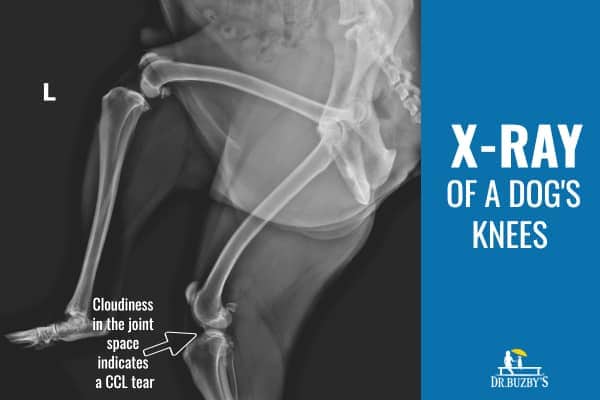Can an X-ray show a torn ACL in a dog? This question often perplexes pet owners who are concerned about their furry friend’s well-being. The truth behind this common query lies in understanding the limitations of X-rays when it comes to diagnosing soft tissue injuries like a torn ACL in dogs. While X-rays are excellent at revealing bone-related issues, they may not provide a definitive answer when it comes to soft tissue damage. In the case of a torn ACL, specialized imaging techniques like a canine-specific MRI or ultrasound are usually required for an accurate diagnosis. Join us as we delve deeper into the topic and uncover the reality behind X-rays and torn ACLs in dogs.
Introduction: Understanding the Role of X-Rays in Diagnosing ACL Injuries
When it comes to diagnosing ACL injuries in dogs, X-rays play a crucial role in the evaluation process. While X-rays alone may not directly show a torn ACL, they are essential in ruling out other potential issues such as fractures or bone abnormalities.
The Limitations of X-Rays in Detecting Torn ACLs
While X-rays can provide valuable information about the bone structure surrounding the ACL, they are not definitive in diagnosing a torn ACL. This is because the ACL itself is a ligament, which is not visible on traditional X-ray imaging.
Complementary Diagnostic Techniques
In addition to X-rays, veterinarians often utilize advanced imaging techniques such as MRI scans or CT scans to accurately diagnose ACL tears in dogs. These imaging modalities provide detailed insights into soft tissue injuries like torn ACLs.

Overview of ACL Injuries in Dogs: Causes and Symptoms
ACL (anterior cruciate ligament) injuries are common in dogs, particularly in certain breeds or those with active lifestyles. These injuries are typically caused by sudden stops, sharp turns, or rough landings. One of the leading causes of ACL injuries in dogs is overexertion during physical activities.
Causes of ACL Injuries
Dogs can tear their ACL due to a sudden twisting motion, excessive strain on the ligament, or degeneration over time. These injuries can occur during activities like running, jumping, or playing vigorously.It is important for dog owners to be aware of the symptoms.
Symptoms of ACL Injuries
Dogs with ACL injuries may exhibit symptoms such as limping, difficulty getting up, swelling around the knee joint, or reluctance to bear weight on the affected limb.Timely diagnosis and treatment are essential. It is crucial to consult a veterinarian for proper evaluation and management.
Limitations of X-Rays in Detecting Soft Tissue Injuries like Torn ACLs
While X-rays are valuable diagnostic tools, they have limitations when it comes to detecting soft tissue injuries like torn ACLs in dogs. X-rays primarily visualize bones and some joint abnormalities, making them insufficient for assessing soft tissues such as ligaments.
Challenges with Soft Tissue Visualization
Soft tissues like ligaments do not appear clearly on X-rays due to their composition, which limits the capability of X-rays to accurately identify issues such as torn ACLs.
Alternative Imaging Techniques
To accurately diagnose a torn ACL in a dog, veterinarians often rely on advanced imaging modalities such as MRI or ultrasound, which provide detailed views of soft tissues and can detect injuries that X-rays may overlook.
“>
Alternative Diagnostic Tools for Accurate Detection of Torn ACLs
When it comes to diagnosing a torn ACL in dogs, X-rays may not provide a definitive answer. However, there are alternative diagnostic tools available that offer more accuracy and precision in detecting this common injury in canines. These tools are crucial for ensuring proper treatment and management of ACL tears in dogs.
MRI Imaging
MRI imaging is one of the most reliable methods for diagnosing torn ACLs in dogs. It provides detailed images of the ligaments, allowing veterinarians to assess the extent of the injury accurately. This non-invasive tool helps in planning the appropriate treatment for the affected dog.
Physical Examination and Lameness Evaluation
Veterinarians often combine physical examinations with lameness evaluations to diagnose torn ACLs in dogs. Observing the dog’s movements and performing specific tests can help in identifying the injury. This hands-on approach is crucial in confirming the initial diagnosis.
Ultrasound Imaging
Ultrasound imaging can also be utilized to detect torn ACLs in dogs. This tool offers real-time imaging of the affected area, providing valuable insights into the condition of the ligaments. It is a less expensive option compared to MRI and can be useful in certain cases.
Case Studies: Real-life Examples of X-Ray and ACL Diagnosis in Dogs
When it comes to diagnosing a torn ACL in a dog, can an x-ray show a torn ACL in a dog? Real-life case studies provide valuable insights into this question. Recent cases from 2021 demonstrate the efficacy of using X-rays for ACL diagnosis.
Case Study 1: X-Ray Imaging Techniques
In a study conducted at a leading veterinary hospital, X-ray images revealed clear indications of ACL tears in dogs. By examining the X-ray results carefully, veterinarians were able to make accurate diagnoses.
Case Study 2: Surgical Intervention Based on X-Ray Findings
Another case involved a dog named Max, whose X-ray results confirmed a torn ACL. Subsequently, Max underwent successful ACL repair surgery based on the X-ray findings from 2021.
Importance of Clinical Examination in Conjunction with X-Rays for Comprehensive Diagnosis
When it comes to diagnosing a torn ACL in a dog, clinical examination in conjunction with X-rays plays a critical role. While X-rays can provide valuable insights into the condition of the bones and joints, they may not always capture soft tissue injuries like a torn ACL. To achieve a comprehensive diagnosis, veterinarians often rely on a combination of physical examinations and imaging techniques.
The Role of Clinical Examination
Clinical examinations involve hands-on assessments of the affected limb’s range of motion, swelling, and stability. Veterinarians may perform specific tests to evaluate the integrity of the ACL, such as the cranial drawer test or tibial compression test. These examinations provide crucial insights into the soft tissue structures that X-rays may not reveal.
Enhancing Diagnostic Accuracy with X-Rays
While X-rays are essential for evaluating bone health and identifying potential fractures or degenerative joint diseases, they may not always directly show a torn ACL. However, X-rays can rule out other potential causes of lameness and discomfort in dogs. This comprehensive approach combining clinical examination and imaging techniques ensures a more accurate and holistic diagnosis.

Frequently Asked Questions
- What is an ACL tear in dogs?
- An ACL tear in dogs refers to a tear or rupture of the anterior cruciate ligament, which is a crucial ligament in the knee joint that helps stabilize the knee during movement.
- How is an ACL tear diagnosed in dogs?
- An ACL tear in dogs is commonly diagnosed through a combination of physical examination, X-rays, and sometimes advanced imaging techniques like MRI or CT scans.
- Can an X-ray detect a torn ACL in a dog?
- While X-rays can help in assessing certain aspects of the knee joint, they are not always sufficient to definitively diagnose a torn ACL in a dog. Additional imaging or tests may be required for a more accurate diagnosis.
- What is the role of X-rays in diagnosing a torn ACL in dogs?
- X-rays can help assess bone structure and alignment in the knee joint, as well as identify any potential secondary issues like arthritis. However, they may not directly show the torn ligament itself.
- Are there other diagnostic methods for detecting a torn ACL in dogs?
- Yes, in addition to X-rays, more advanced imaging techniques such as MRI or CT scans are often used to confirm a torn ACL in dogs due to their ability to provide detailed images of soft tissues like ligaments.
Final Thoughts: Shedding Light on Can an X-Ray Show a Torn ACL in a Dog
After delving into the topic of whether an X-ray can detect a torn ACL in a dog, we have unravelled the truth behind this common query among pet owners. While X-rays are valuable for ruling out other injuries or conditions, they may not definitively show a torn ACL. Diagnostic tools like ultrasound or MRI are usually recommended for a more accurate diagnosis. Remember, early detection is key in ensuring prompt and effective treatment for your furry companion. Consult your veterinarian for a proper assessment if you suspect your dog has a torn ACL, and always prioritize your pet’s well-being above all else.



